It’s no surprise that speeding is a constant problem on the William R. Bennett Bridge, but the total disregard for the speed limit can be a deadly decision.
Photo Credit KelownaNow
The current speed limit on the bridge is 60 km/h, but a quick drive along the bridge will show you that many ignore the limit and travel 20 to 30 km/h faster. An estimated 70,000 vehicles use the bridge every single day, as well as cyclists and pedestrians.
While the motoring public think the speed should be increased, in a previous story by KelownaNow, the Ministry of Transportation said it has no plans to make a change. The design of the bridge is cited as the main factor for the current speed limit as there is a vertical curve and approach curve, which could pose a risk if a higher speed were to be implemented.
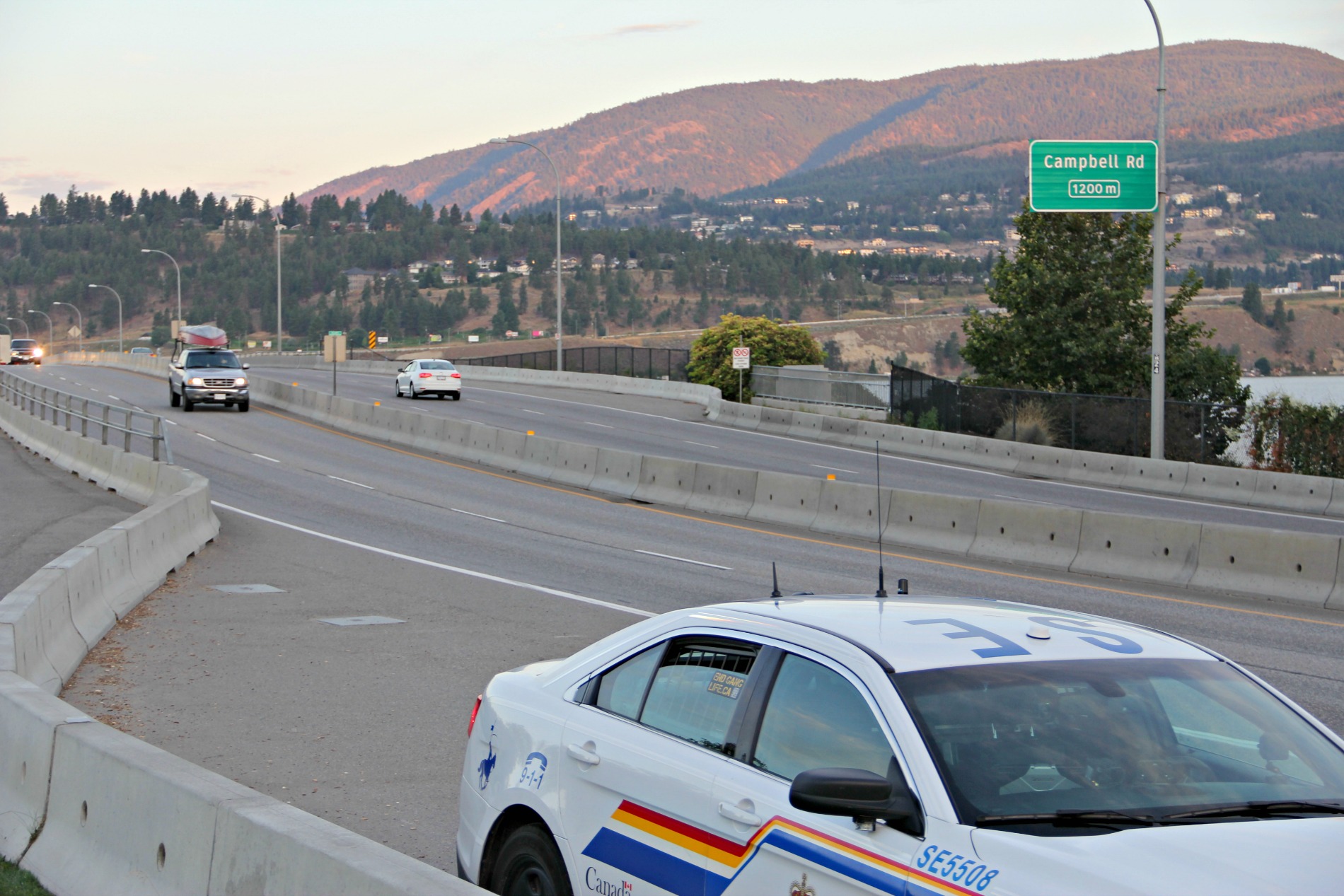
Photo Credit KelownaNow
KelownaNow decided to tag along with Kelowna RCMP in the early morning hours while they conducted speed enforcement on the bridge to see if the problem is as rampant as it seems. Within a few minutes, officers pulled over their first speeder, who was doing 90 km/h. The motorist was handed a $138 ticket and sent on their way.
- Click play button below to watch our interview with Kelowna RCMP -
It didn’t take long for the cars to be pulled over and motorists ticketed for disobeying the speed limit. Those caught by the radar enforcement all registered a speed at or above 90 km/h. One motorist was not only speeding but talking on his cellphone at the same time. He was given two tickets.
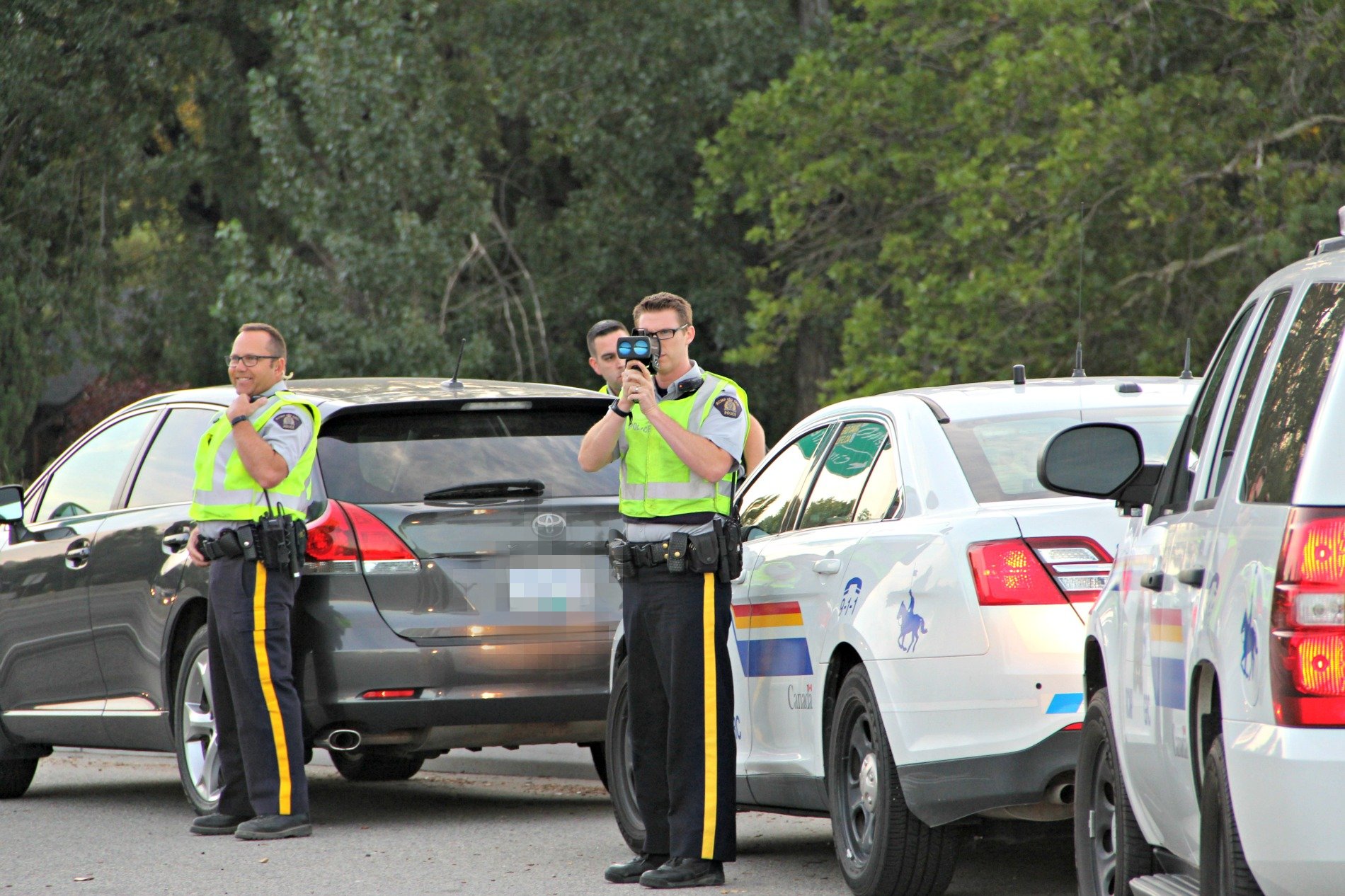
Photo Credit KelownaNow
During the traffic enforcement, officers were very visible to motorists as several cars were set up along the highway and high-vis vests were worn.
RCMP Cst. Jesse O’Donaghey says when enforcement is conducted, officers do their best to make themselves highly visible as this helps to reduce speeding and future speeding if people know the police are out and enforcing the rules.
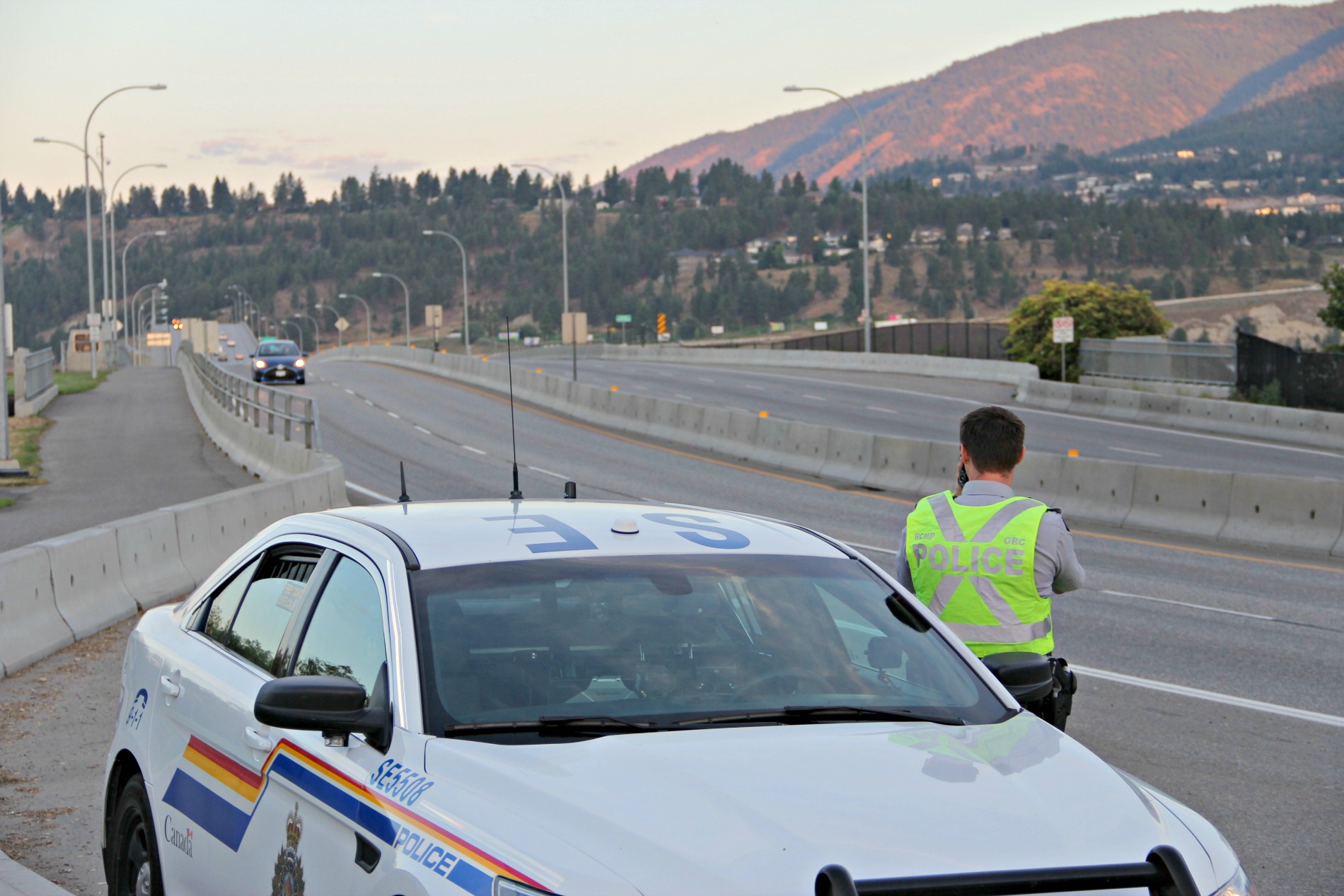
Photo Credit KelownaNow
While many may think it’s harmless to speed across the bridge, there are many reasons as to why it is incredibly dangerous. When heading to West Kelowna the speed along the bridge is 60 km/h. Once off the bridge and up the hill onto West Bank First Nation land the speed increases to 80 km/h. This gradual increase keeps motorists at a safe speed for the conditions and helps with traffic flow.
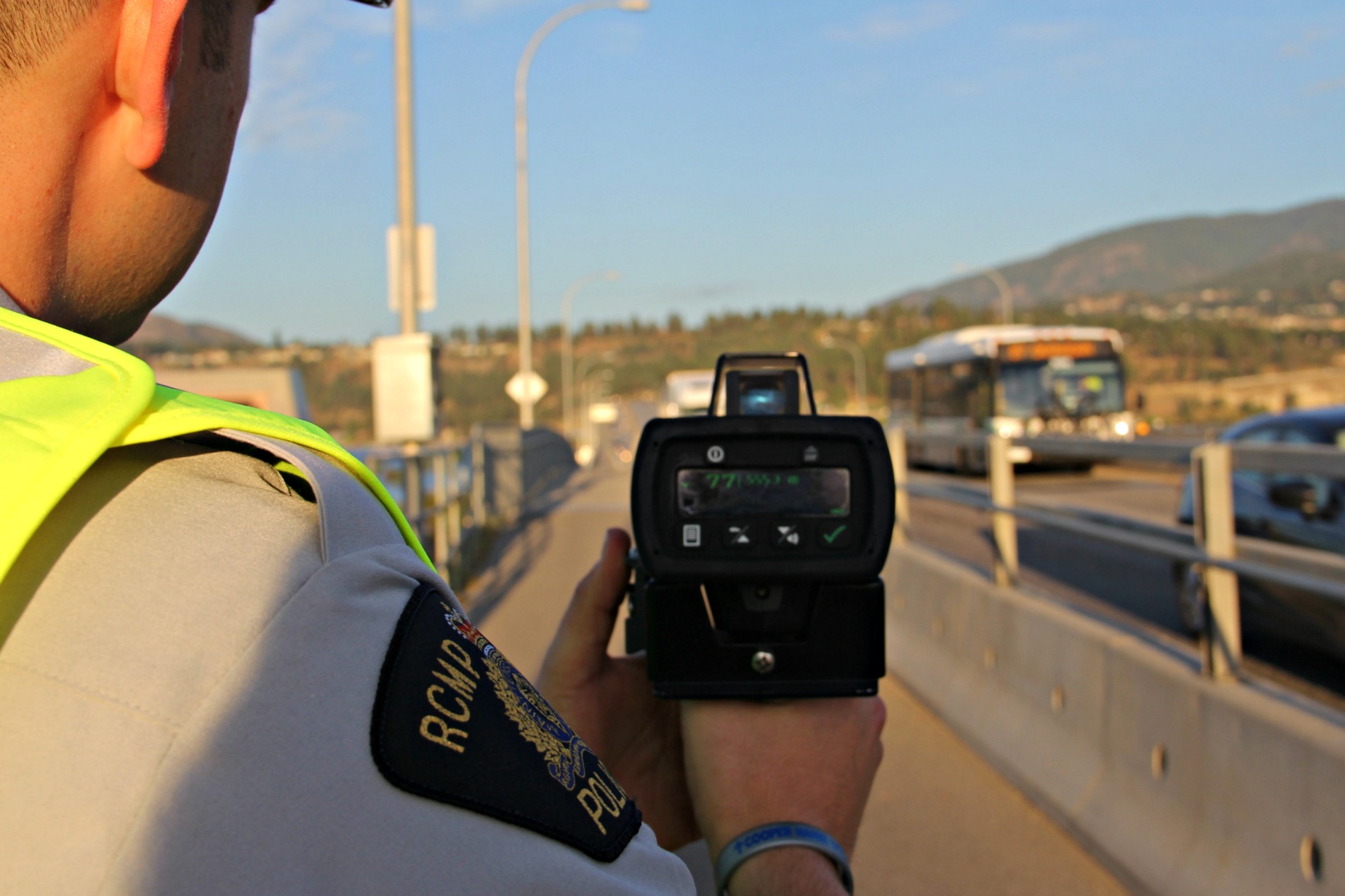
Photo Credit KelownaNow
Going into Kelowna, the speed heading onto the bridge and along the bridge is 60 km/h and once motorists reach Kelowna the speed lowers to 50 km/h. This slow down heading into downtown is important as right around the corner there is a set of traffic lights and motorists need to be prepared to stop quickly.
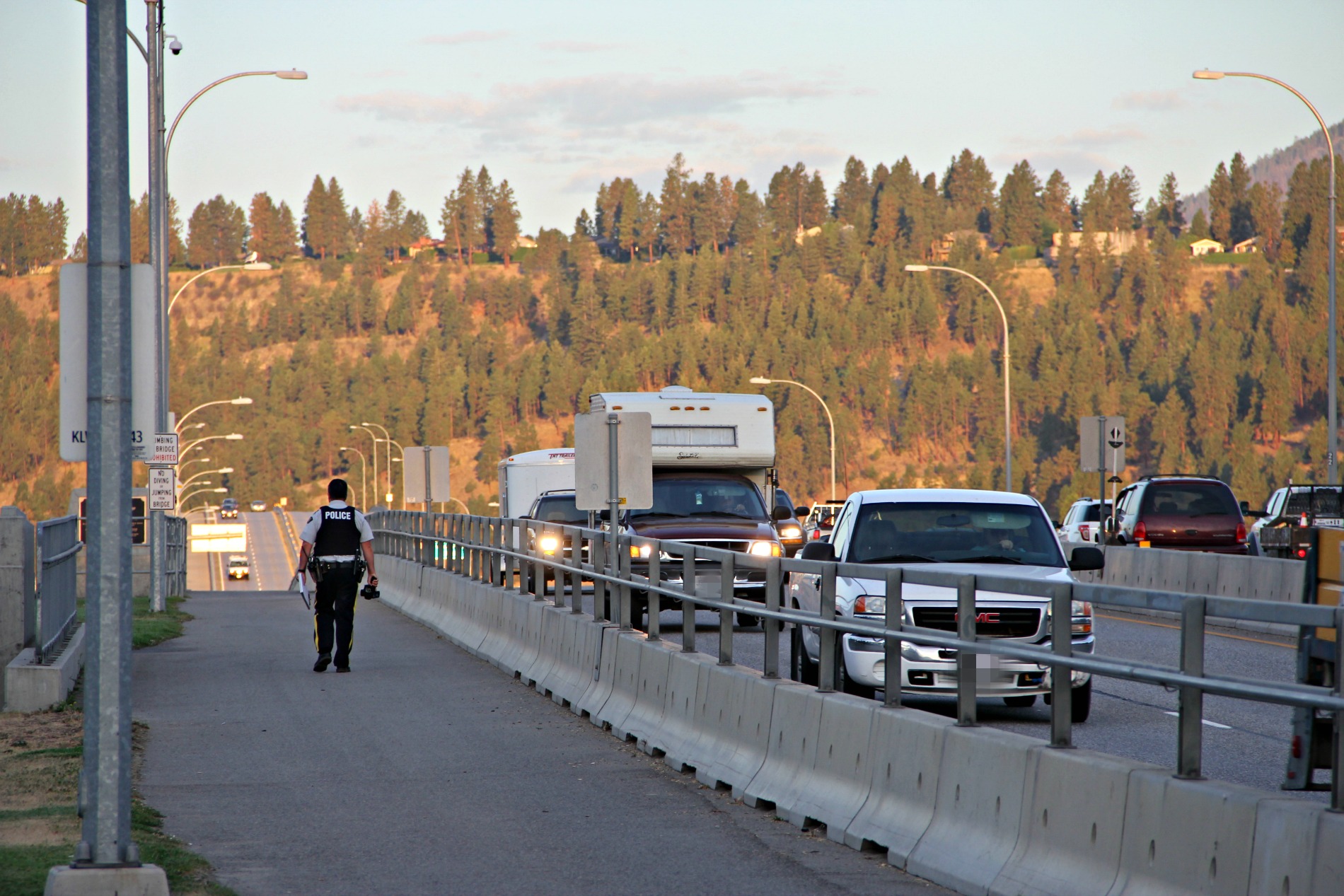
Photo Credit KelownaNow
O’Donaghey points to this section as an area of concern. If someone is speeding down the bridge at 85 or 90 km/h and they suddenly come upon someone driving 50 km/h it could prove disastrous.
“It also doesn’t make sense as to why someone would speed along the bridge, they just get bottlenecked,” said one of the officers conducting the enforcement. “You get going at 80 or 90 and then you run into people doing the speed limit. Now you’re weaving in and out of traffic, just to save a few seconds. I guess it gets the adrenaline pumping. It gets the adrenaline pumping when they see us too!”
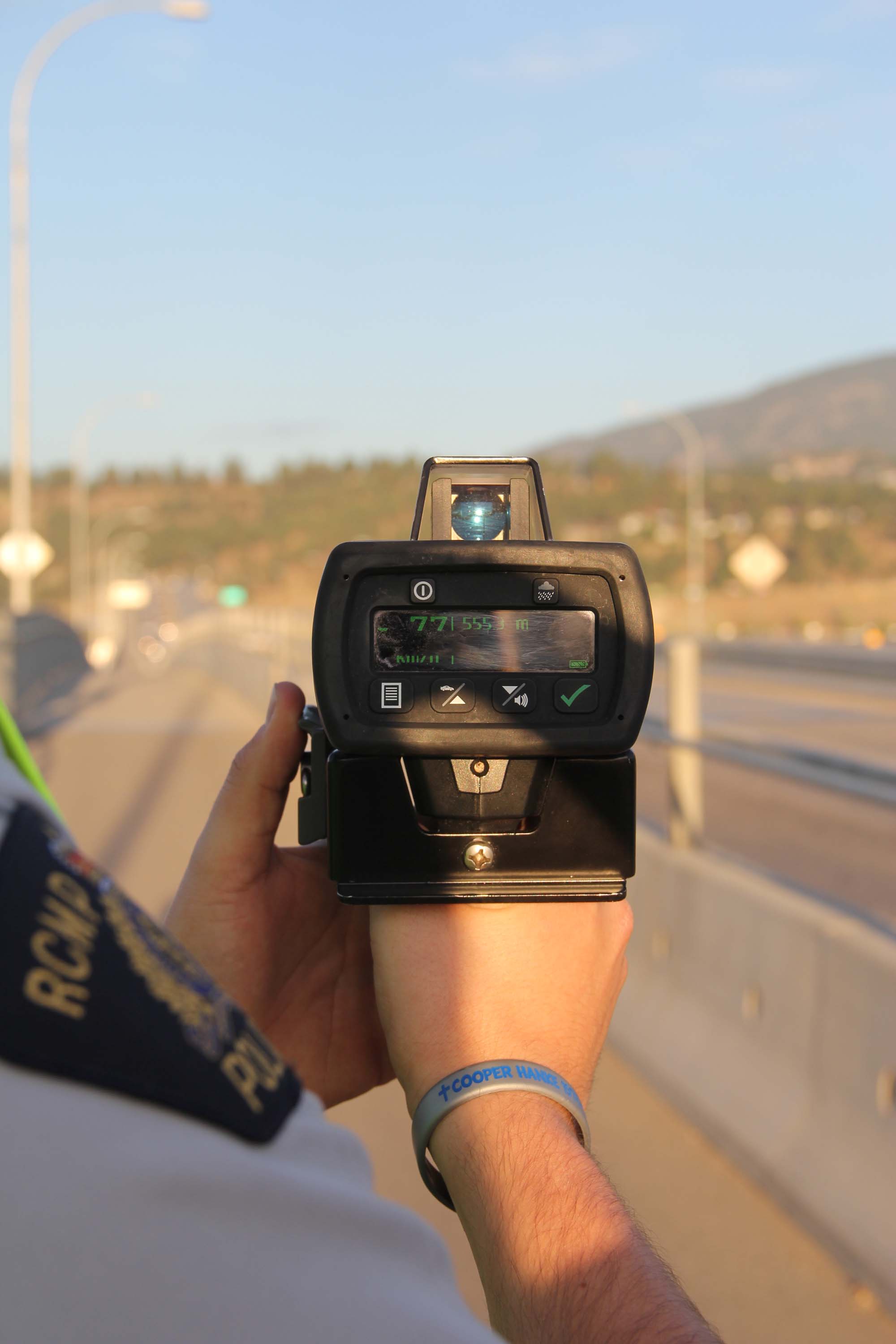
Photo Credit KelownaNow
Catching speeders on the bridge was like catching fish in a barrel. It took less than 30 minutes for police to stop eight drivers using the radar gun. Conditions during the morning enforcement blitz were ideal, but it’s a completely different story when it is raining, dark, or if it is snowing. According to the officers, people continue to speed in these conditions and some, over 100 km/h.
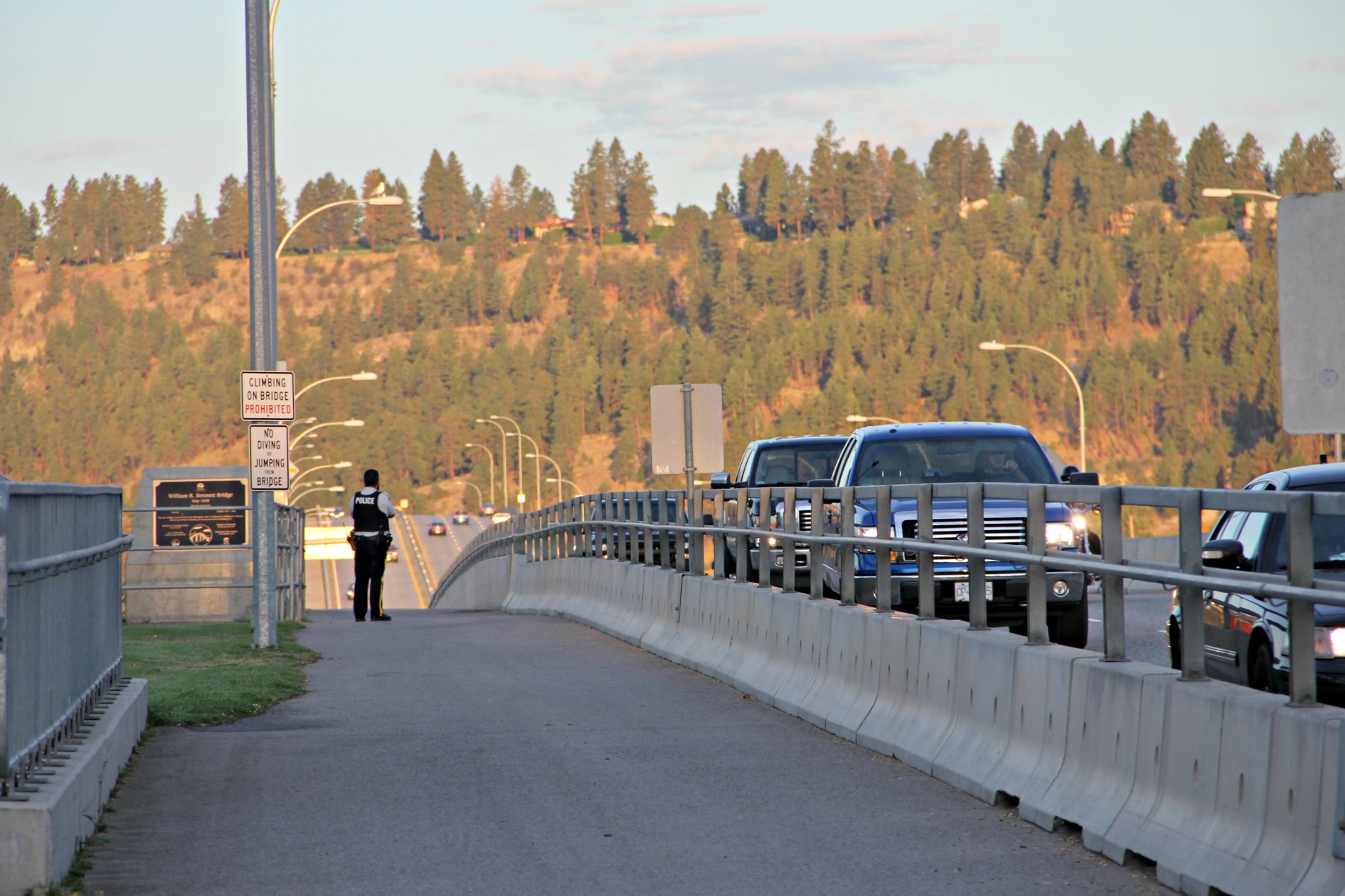
Photo Credit KelownaNow
Just last week, officers ticketed one motorist travelling more than 120 km/h while another handed out a ticket to a driver, who was heading home during bar flush, and travelling well over 150km/h, in pouring rain.
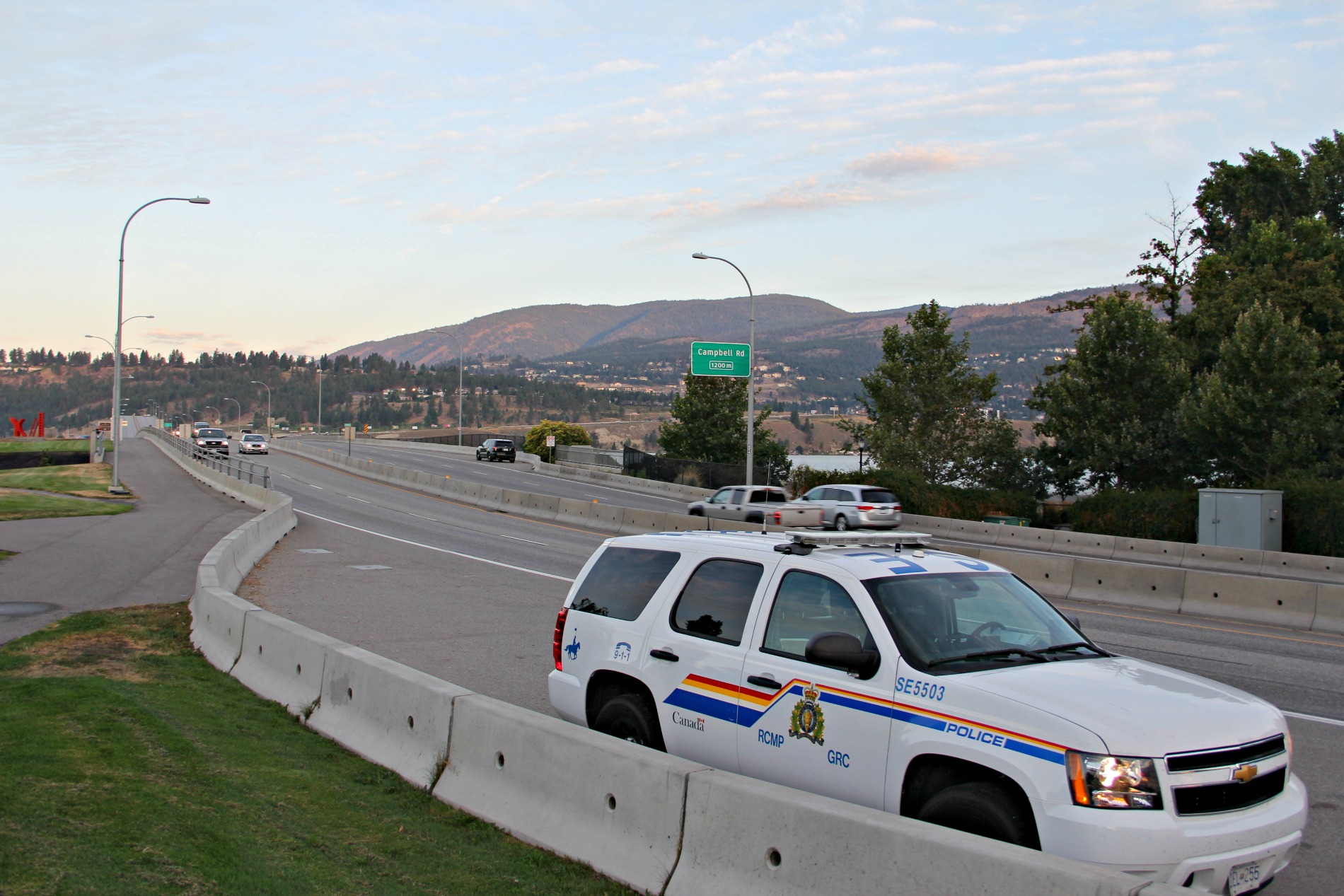
Photo Credit KelownaNow
The RCMP is encouraging motorists to slow down and obey the speed limit as it not only puts their lives at risk but other motorists as well. The limit is 60 km/h and speeding won’t get you there any faster, it could end in an accident, fatality or ticket instead.
Share your thoughts on the above story at news@kelownanow.com
